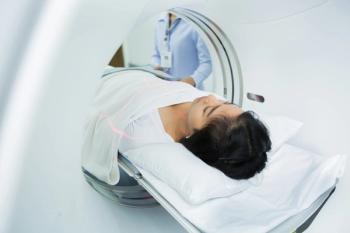
Photon-Counting–Detector CT Can Characterize Small Renal Stones
Use of a photon-counting-detector CT for renal stones is similar to using dual-energy CT.
Photon-counting–detector (PCD) CT is superior to standard CT in helping characterize small renal stones, according to a study published in the journal
Researchers from the United States and Germany sought to evaluate the utility and efficacy of a PCD CT system in improving the automatic characterization of stones of 3 mm or smaller.
Ten women and 20 men, median age 61 years, participated in the study. All underwent a clinical renal stone characterization scan with dual-energy CT, followed by a research PCD CT scan with the same radiation dose. Two radiologists reviewed for stones, which were identified as uric acid or non–uric acid. Stone size and contrast-to-noise ratio were calculated.
The results showed 160 renal stones; 91 were 3 mm or smaller in axial length. The odds of detecting a stone at PCD CT were 1.29 for all stones, compared with 1-mm-thick routine images from dual-energy CT.
Stone segmentation and characterization were successful at PCD CT in 70.0% (112 of 160) of stones versus 54.4% (87 of 160) at dual-energy CT, and was superior for stones 3 mm or smaller at PCD CT (45 versus 25 stones, respectively). Stone characterization agreement between scanners for stones of all sizes was substantial.
The researchers concluded that using a PCD CT to detect renal stones was similar to using dual-energy CT, however the PCD CT was better able to help characterize small renal stones.
Newsletter
Stay at the forefront of radiology with the Diagnostic Imaging newsletter, delivering the latest news, clinical insights, and imaging advancements for today’s radiologists.



























